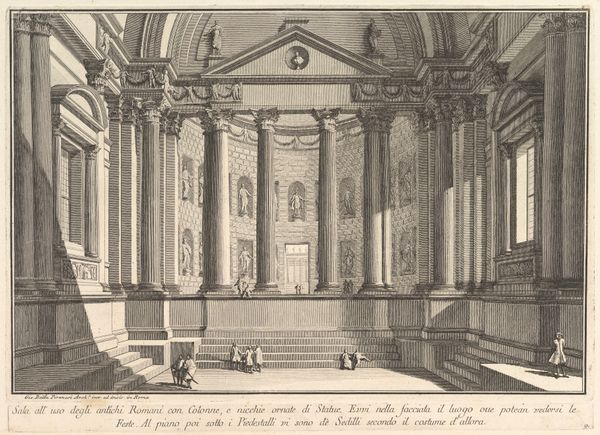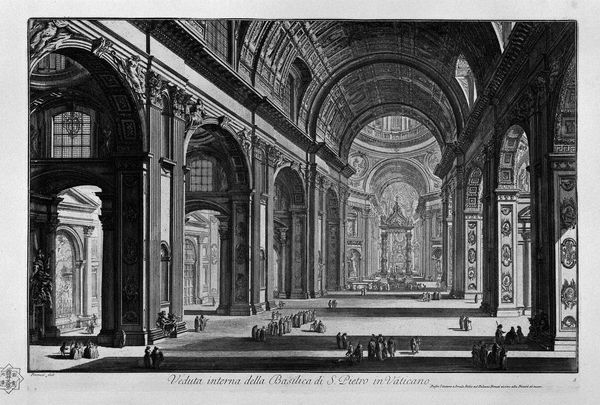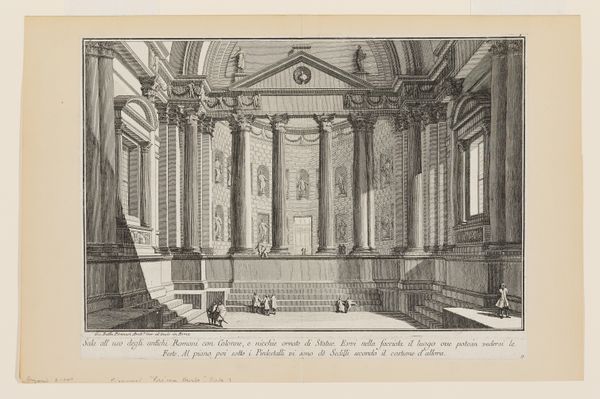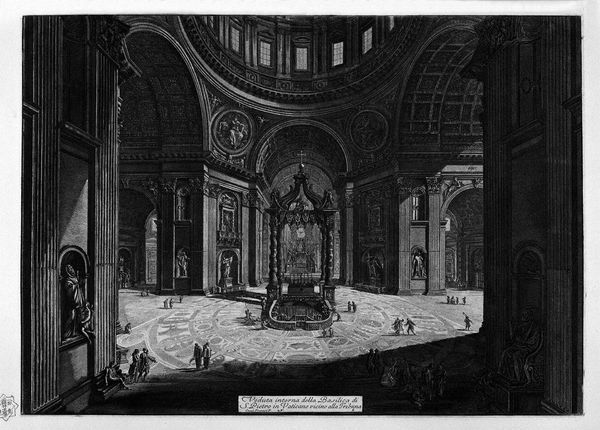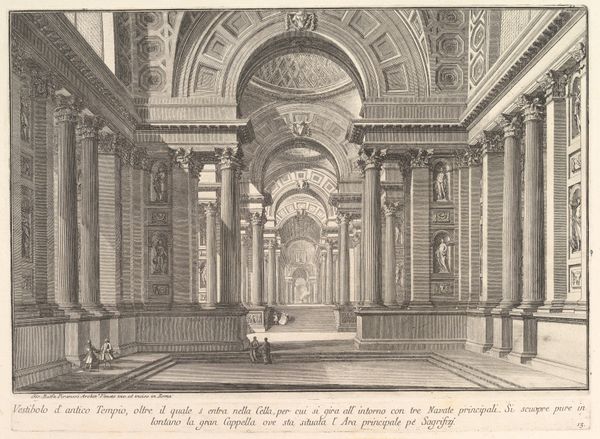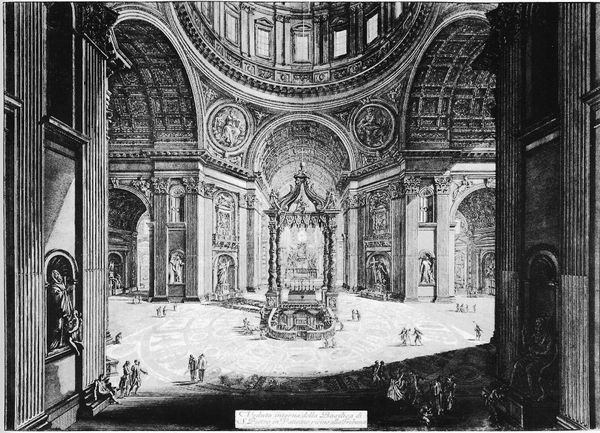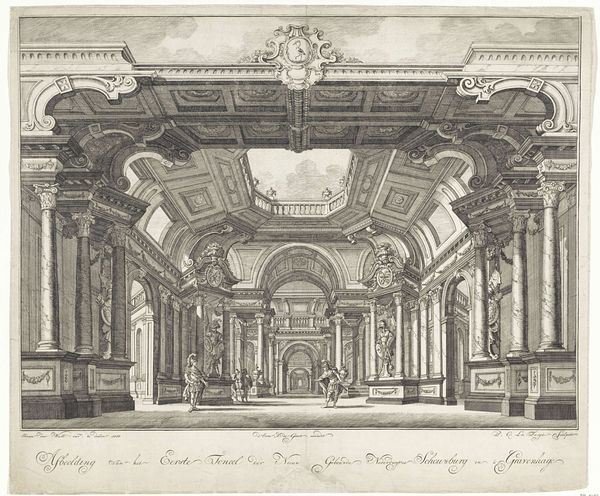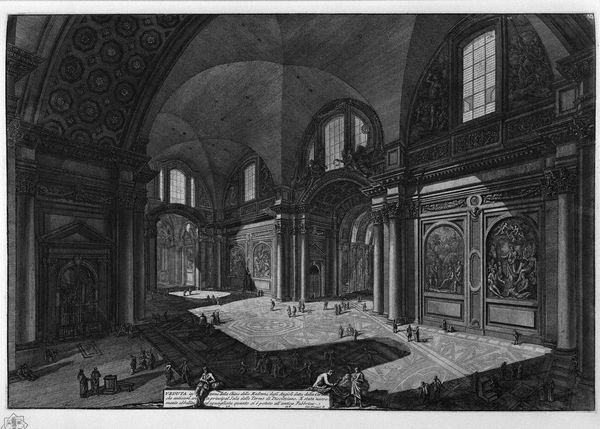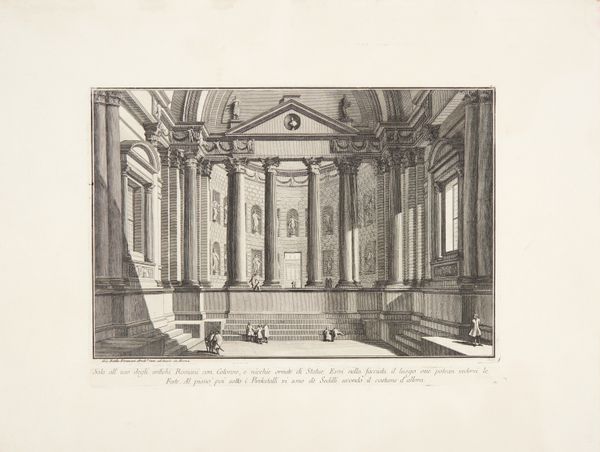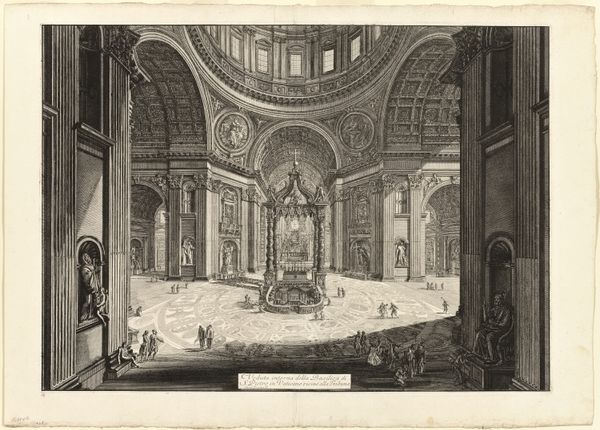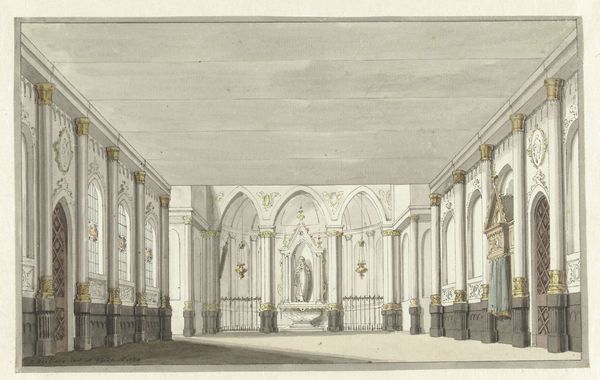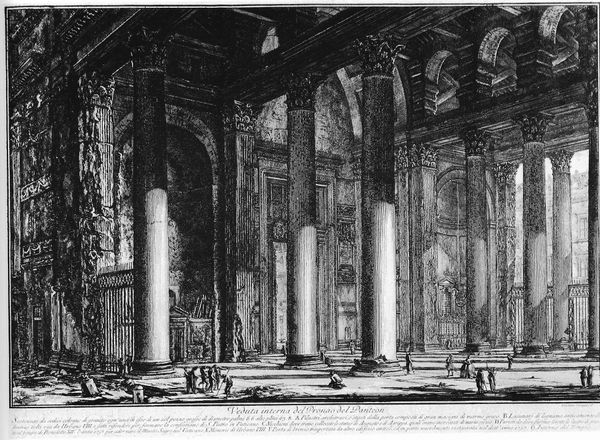
Room use of the ancient Romans with columns and niches adorned with statues
0:00
0:00
drawing, print, etching, architecture
#
drawing
#
neoclacissism
# print
#
etching
#
pencil sketch
#
perspective
#
charcoal drawing
#
ancient-mediterranean
#
column
#
line
#
history-painting
#
architecture
Copyright: Public domain
Curator: This etching, attributed to Giovanni Battista Piranesi, depicts a grand, imagined "Room Use of the Ancient Romans with Columns and Niches Adorned with Statues." What strikes you about it at first glance? Editor: The sheer scale. And the starkness of the lines! It's impressive but also feels… austere, almost clinical. The deep shadows heighten the feeling of a theatrical, if somewhat lifeless, stage. It looks like a modern design despite it's antiquity! Curator: Indeed. Piranesi, though working in a neoclassical style, often infused his prints with a dramatic flair. Notice how the meticulously rendered architectural details—the columns, the niches filled with statues—all serve to create a sense of overwhelming power and the authority of ancient Roman aesthetics. It speaks to a desire for grand narrative that transcends identity. Editor: You're right, it is the means of constructing this idealized image of the past that really fascinates me. The line work, while precise, doesn't aim for pure realism. There's a clear focus on capturing form through controlled labor that idealizes Roman design. This attention to form overshadows its implied use by those figures scattered on the steps—who feel quite detached. Curator: Precisely! The human figures almost seem like afterthoughts. The perspective and dramatic composition overwhelm them and hint at themes of power, cultural memory, and the seductive pull of idealized history. This work acts almost as a manifesto for architectural possibility, echoing the philosophy of the period and the potential of classical ideals within contemporary political movements. Editor: I see it more as commentary on production. By rendering this space as a detailed, reproducible etching, Piranesi commodifies Roman grandeur. The act of printing allows to democratize and sell the notion of the architectural grandeur—though divorced from the lived experience of the average Roman. Curator: Interesting point. That commercial angle reveals further how this echoes ideas surrounding access, taste, and cultural ownership—who gets to write history, and what does that history ultimately look like? This image isn't just about the space; it reflects contemporary society's ideas about what Roman antiquity was meant to be. Editor: I agree. For me, it becomes an interesting artifact revealing our shifting relationship with architectural representation. Curator: Exactly, that's why exploring these contextual nuances helps to enrich our understanding of art and culture and their role in our broader story of society. Editor: Indeed. By really emphasizing materiality and method of construction, this also sheds more light on our consumption of aesthetics.
Comments
No comments
Be the first to comment and join the conversation on the ultimate creative platform.
